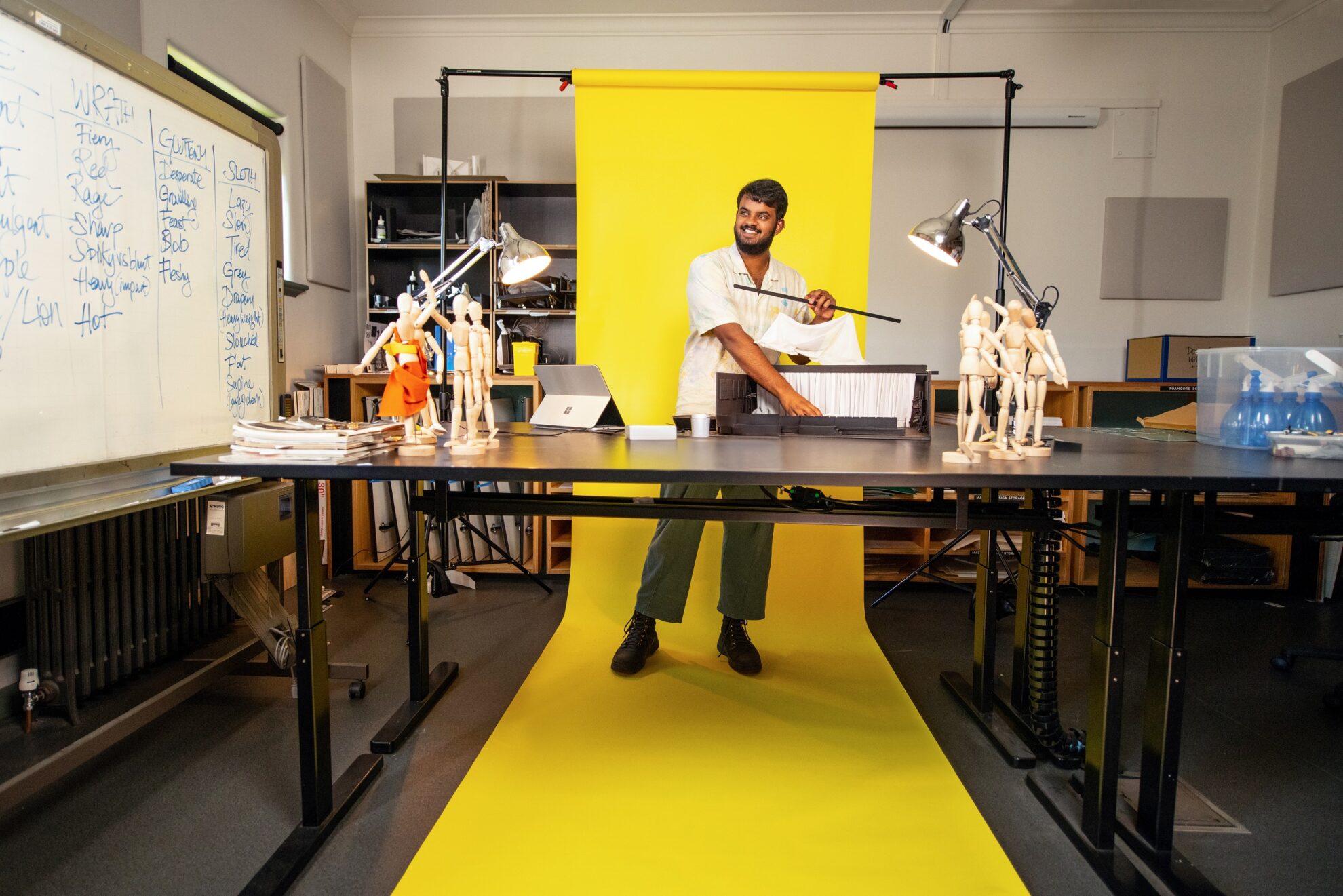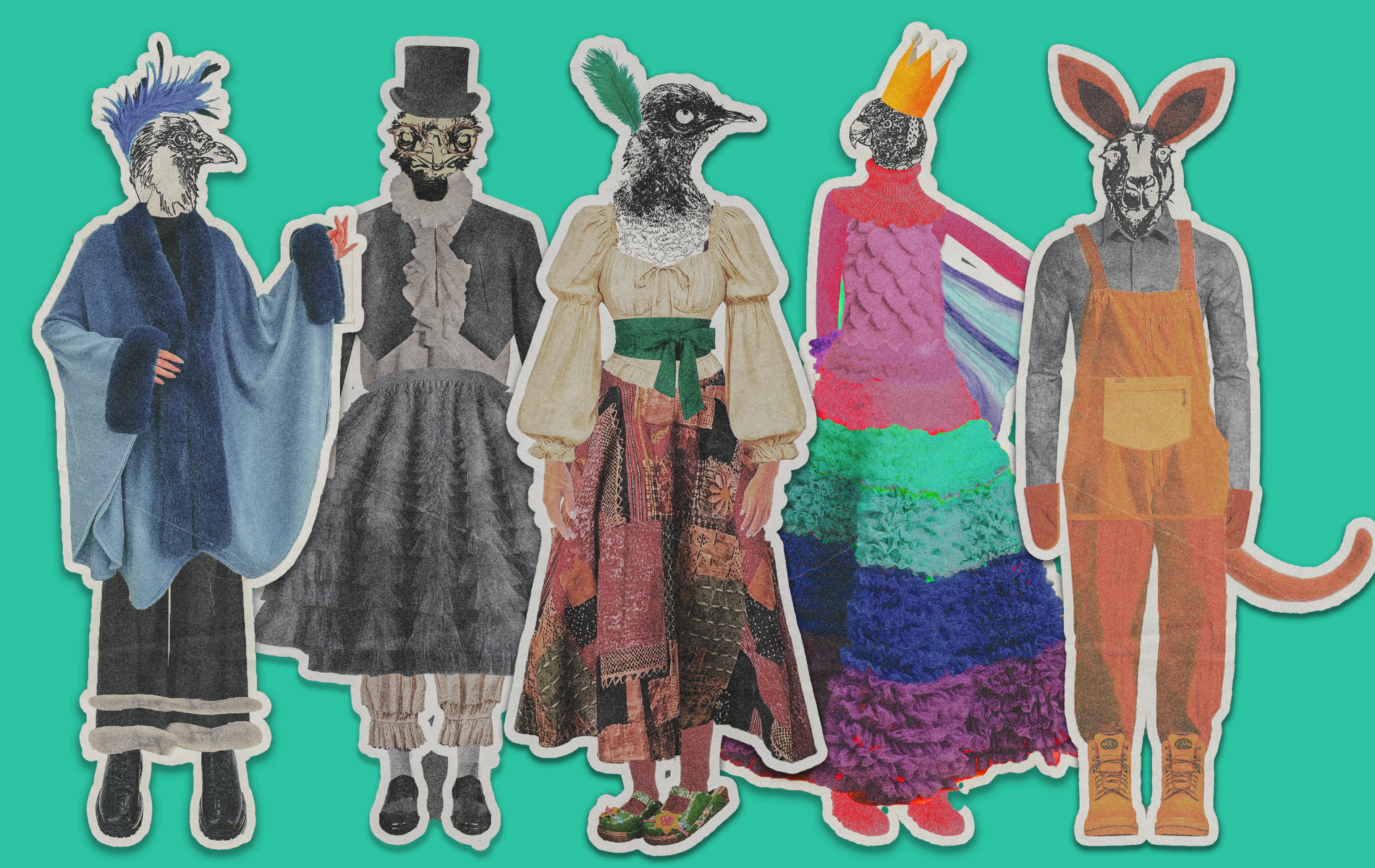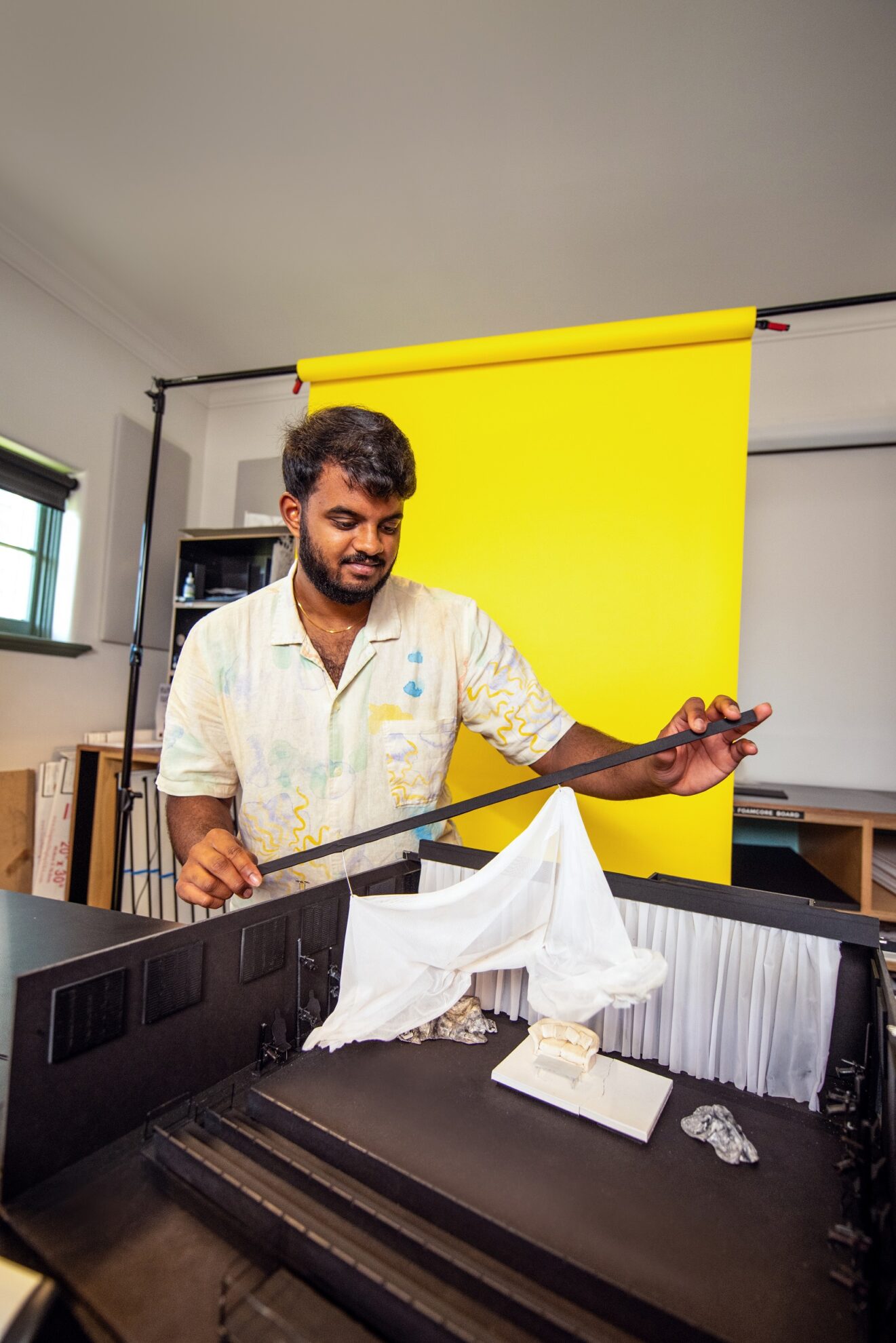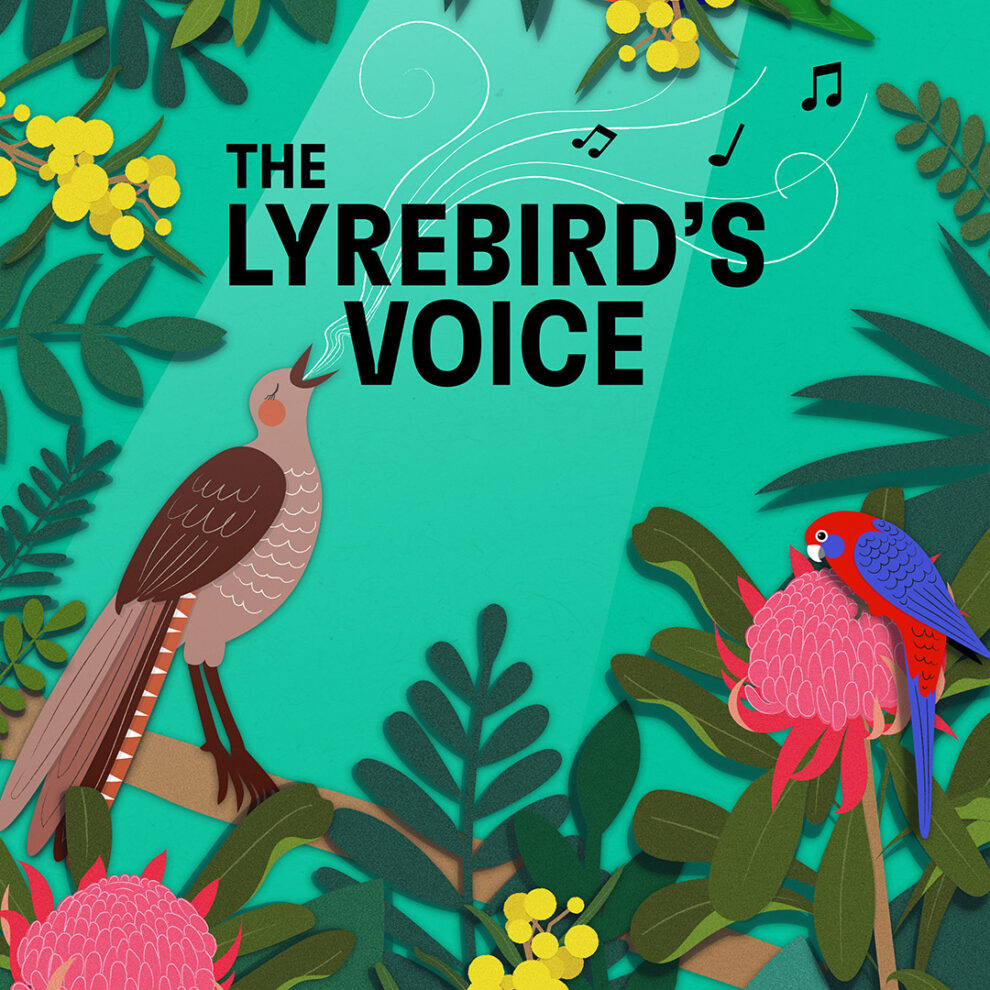
Meet Ishan Vivekanantham: an emerging designer with boundless imagination
Ishan Vivekanantham is the creative force behind the surreal costumes and vibrant sets for The Lyrebird’s Voice, our new family-friendly opera.
His designs evoke native birds, beetles and mammals with unfettered imagination, introducing kids into the boundless creativity of opera.
“The design incorporates key elements of native wildlife — colours, textures and feathers — but takes them to a surreal level to engage younger audiences,” he says.
“The costumes blend period clothing with animal silhouettes, reflecting the regal nature of the birds in the story and their monarch-like presence.”
A recent graduate from the Victorian College of the Arts, Ishan is designing The Lyrebird’s Voice as the inaugural winner recipient of the Truscott Prize. The prize is a new, five-year collaboration between Victorian Opera and The University of Melbourne to support career development for VCA graduates.
“When I heard about the Truscott Prize, I knew I had to give it my all. It felt like such a rare and exciting opportunity to work with a mainstage company with the guidance of a mentor,” Ishan says.
Ahead of The Lyrebird’s Voice, which is touring in May, we asked Ishan about his journey into designing for the stage and his creative process.
What made you want to be a designer?
When I arrived back home in Australia after watching my first ever musical, I begged my parents to take me back and watch more musicals. Every year on my birthday, my parents would take me to see whatever musical was in town. Every musical I watched, I paid close attention to the set and costume designs and would obsess over every detail.
And while I didn’t realise it would be a possibility for me to be a theatre designer until I was in university, I recall these memories and realise that I was always meant to be a set and costume designer for theatre.

What was the first theatre show you saw?
The first show I ever saw was Mamma Mia! in London when I was 11. My parents told me that when you’re in London, you must see at least one West End show. We were seated right at the back row in the top level, but that didn’t matter at all. I was completely mesmerised.
I remember being obsessed with how the set moved and rotated so seamlessly, it felt like magic. I couldn’t stop thinking about how it was done. That experience sparked my fascination with theatre design, and it’s something I carry with me to this day.
I always try to capture that same sense of wonder in my work and create moments that stay with an audience long after the show ends.
How do you approach theatre design for young audiences?
My overall design process doesn’t really change. I always begin by reading the libretto, listening to the music, analysing the characters, and collaborating closely with the director to understand what kind of world will best serve the story.
What does shift, however, is the aesthetic approach. For young audiences, I tend to heighten and stylise the visuals to create something bold and memorable. For example, rather than presenting a naturalistic Australian bush, we amplified the colours and textures to create a more vivid and imaginative landscape.
What was your favourite character to design in The Lyrebird’s Voice?
This is such a hard question; they were all a joy to design! Each character pushed me to think creatively about how to translate the forms and textures of native birds and animals into contemporary clothing.
But if I had to choose, my favourite would be Lord Emu. He has this wonderfully eccentric, jittery energy, and I wanted his costume to reflect that. I built an ensemble out of mismatched garment pieces that shouldn’t work together in theory, but somehow do when brought to life. The result is a layered and textural look that captures the awkward elegance of an emu’s silhouette.

What's your dream show to design?
My dream musical to design is Natasha, Pierre & the Great Comet of 1812. I’m drawn to its genre-defying score, which blends operatic elements with folk and electronic influences to create a rich and unexpected sonic world. It’s a show that invites new audiences into classical material through bold and contemporary storytelling, which I find very exciting.
What I love most, though, is the creative freedom it offers designers. The visual world isn’t bound by realism; instead, it encourages design concepts that express emotional and psychological states. This approach aligns perfectly with my values as a designer—where visual storytelling is driven by feeling, not just setting.
What's the very first thing you do when you approach a new project?
The very first thing I do is make a cup of tea and settle in for an uninterrupted first read of the script or listen to the score. That initial encounter is so important because it reveals my instincts, emotional reactions, and gut responses to the piece, which often become the foundation of the entire design. I always jot down notes during that first read-through, and when I feel stuck later in the design process, I return to them.
There’s something incredibly grounding about those first impressions as they have a way of unlocking creative solutions and reminding me what the heart of the piece really is.
What advice do you have for aspiring costume and set designers?
Stay endlessly curious. Curiosity is what keeps me going in this field and it’s the reason I’m still so passionate about set and costume design. See as much theatre as you can: shows you’re drawn to, and especially the ones you’re not. Inspiration often comes from the most unexpected places; visual art, architecture, fashion, even conversations overheard on a tram. Research deeply, explore widely, and don’t be afraid to ask questions.
The more curious you are, the more nuanced and imaginative your designs will become.
The Lyrebird’s Voice is also part of our education-focused Access All Areas program. Register your school now to take part and see this unique work.
READ MORE:
